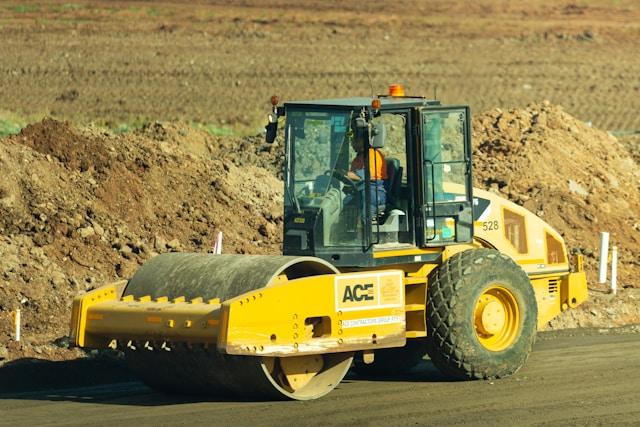Purchasing High-end Machines for Your Business: A Step by Step Guide
Investing in high-end machinery can directly influence efficiency, productivity, and overall profitability when running a successful business, particularly in sectors like construction, agriculture, or manufacturing. Often seen as capital expenses, these machines allow companies to handle large-scale projects, increase output rates, and ensure high-quality results. However, buying such equipment involves multiple steps that require careful planning and execution. This guide breaks down the process into manageable stages, from assessing your needs to finalizing your purchase, ensuring you make an informed decision. From the initial evaluation of your business requirements to the moment you take ownership of your machine, understanding these steps can save you time and costs. Explore what you need to consider before investing significantly in high-end machinery.
Assessing Your Needs
Before making any purchases, you must thoroughly assess your specific needs. Start by analyzing the nature of your projects and the machines required to complete them efficiently. Consider variables such as productivity goals, project timelines, and tasks. For instance, determining whether you need an excavator, bulldozer, or loader is crucial if your business involves construction. Getting the help of reputable excavator dealers for this excavator can provide insight into which model best fits your operational needs. Engaging with these experts ensures you gather as much information as possible before proceeding further. Understanding different models and their functionalities can significantly enhance your decision-making process, preventing hasty choices that might not serve your needs in the long run.
Setting a Budget
Once you pinpoint the type of machinery needed, the next step involves establishing a budget. High-end machines often come with a hefty price tag, so determining how much your business can invest is essential. Consider the initial purchase price and ongoing costs such as maintenance, fuel, insurance, and potential financing fees. This holistic view of expenses helps secure a complete financial picture and avoids unanticipated financial strain. If necessary, look into financing options or leasing agreements that allow your business to manage cash flow more effectively. A clear economic plan can guide your purchasing decisions and help you stick to your budget throughout the selection process.
Researching Brands and Models
The market offers various brands, each with its strengths and weaknesses. Start by reading reviews, visiting manufacturer websites, and checking forums where business owners discuss their experiences with different machines. Collect data on each brand's reliability, durability, and after-sales support. Gathering insights from industry peers can shed light on which brands hold up best under the pressures of daily operations. It's also valuable to attend trade shows where you can see machinery in action and speak with manufacturers directly. Engaging with industry experts can provide insider knowledge about various models' performance and service history. The more informed you are, the better equipped you will be to select a machine that meets your expectations and contributes meaningfully to your operations.
Evaluating New vs. Used Equipment
Deciding between new and used equipment is another critical consideration when purchasing machinery. New machines undoubtedly come with the latest technology and warranties that provide peace of mind. However, they also come at a premium price, which may not fit every budget. Conversely, used machines can offer substantial savings and perform well-maintained effectively. Evaluate each option's advantages and disadvantages, considering your business's current financial situation and long-term plans. Be sure to ascertain the operational history of any used equipment, including any previous maintenance records, to gauge its reliability. Additionally, having a trusted mechanic inspect used machines can help uncover hidden issues. Balancing cost with quality and reliability will be key in making this decision.
Conducting a Cost-Benefit Analysis
A cost-benefit analysis is an essential tool in evaluating potential machinery purchases. This process involves analyzing the projected benefits of acquiring new equipment against costs. Consider aspects such as productivity improvements, labor savings, and operational efficiencies that new machines promise. For instance, if an excavator can reduce the time to complete a specific task, this efficiency translates to better project delivery and potentially higher revenue. Gather numerical projections and analyze them against the total cost of ownership for the machines under consideration. Clearly defined metrics will allow for a more straightforward comparison and highlight which machine truly offers the best value. Regularly revisiting your analysis will help you remain on track as financial conditions change.
Making the Purchase
Once you've completed your research and analysis, it's time to finalize your purchase. Contact your chosen dealers for new or used equipment to discuss pricing and availability. Negotiation is crucial; ensure you are comfortable with the terms and that they align with your budget. Don't hesitate to ask for discounts, extended warranties, or favorable financing options. Be prepared to walk away if the deal doesn't meet your needs, as personal business financial health should always lead your decisions. Once a satisfactory agreement is reached, review all documentation thoroughly before signing. This final step ensures you comprehend the purchase terms, warranty conditions, and included services. Taking time at this stage can prevent complications and secure a purchase that enhances your operations.
An informed approach to purchasing high-end machinery positions your business for long-term success. Carefully navigate each stage, from the initial assessment to understanding financing and ongoing evaluation. This diligence ensures that you select the right machine to enhance productivity and profitability for your operations.

